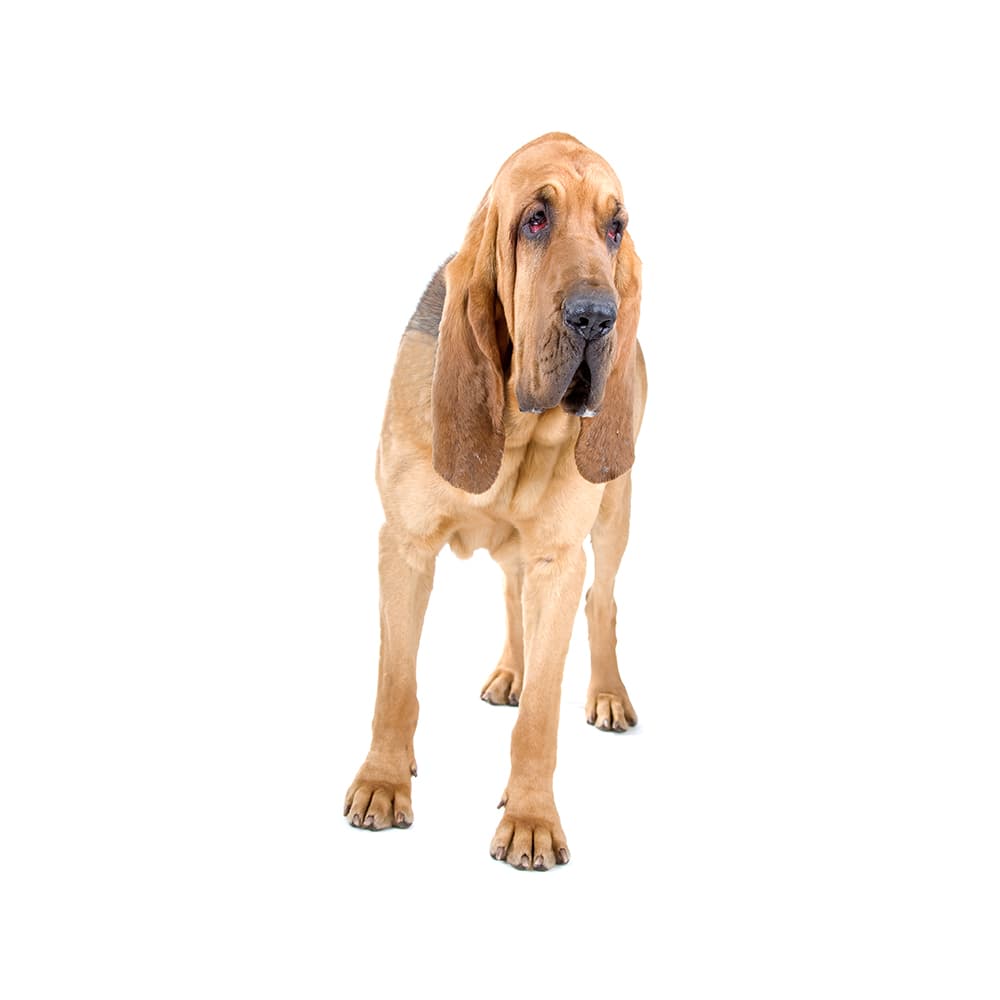Discover your dog's connection to this breed and 200+ others


Discover your dog's connection to this breed and 200+ others



The Bloodhound is one of the oldest breeds used for trailing and tracking. Their history traces back over a thousand years to monastic and feudal times in medieval Europe. They were initially bred by monks in the Saint-Hubert Monastery in Belgium, which is why they're sometimes referred to as St. Hubert Hounds. They were then refined in England, and hence came to be known as Bloodhounds, reflecting the blooded, or noble, purity of the line. The breed is known for its exceptional tracking skills, even across great distances, and played a crucial role in the development of other tracking breeds.
Bloodhounds can suffer from brachygnathism, cataracts, cryptorchidism, degenerative myelopathy, ectropion, elbow dysplasia, elbow dysplasia (ununited anconeal process), entropion, hip dysplasia, hypothyroidism, keratoconjunctivitis sicca, macropalpebral fissure, pannus, patellar luxation, persistent pupillary membranes, prolapsed gland of nictitans, retinal dysplasia, spinal muscular atrophy, and ventricular septal defect. As with all deep chested dogs they may develop bloat, also known as gastric dilation volvulus (GDV). This is a life-threatening condition that can come on suddenly, so it’s important to know the warning signs and get an affected dog immediate veterinary care. Their ears and skin wrinkles should be checked daily for signs of infection or odor. Genetic testing is recommended, including for the following additional conditions: hyperuricosuria, degenerative myelopathy, and progressive rod-cone degeneration.
Bloodhounds are known for their kind, patient, and gentle temperament. They are extremely affectionate and get along well with children and other animals. Despite their generally docile demeanor, they are tireless trail followers when they catch a scent, which makes them potential wanderers and escape artists.
They can be stubborn and independent but are very sensitive to their owner's mood. Bloodhounds are typically not aggressive and make poor guard dogs. Their training requires consistency, patience, and positive reinforcement. The breed is also known for its deep, booming voice and tendency to drool.
A canine genetic lineage is a group of individuals or entire breeds that descended from common ancestors predating modern breed formation. Often these lineages are associated with a ‘type’ of dog with a unique historical working role and associated behaviors (e.g., herding, scent hunting, etc.).
Scent Hounds were historically used as hunting dogs. They were bred for their exceptional sense of smell, which is also a defining factor of this lineage of dogs. Scent hounds also have a distinctive bark which sounds more like a howl, this was developed to communicate with their hunters. Many breeds within this lineage were bred to work in groups, and have a strong pack mentality. Scent Hounds tend to have a stronger drive to follow their nose instinctually than their human counterpart. Scent hounds are also known for their endurance and stamina, these traits allow them to follow scents over long distances and for long periods of time.
Example breeds with ancestry from this lineage include Basset Hound, English Foxhound, and Dachshund.
According to the AKC, high-ranking members o fthe pre-Reformation church carefully developed the Blood Hound breed. These monks carried out the bishop's breeding program, and their hounds came to be called "blooded hounds", meaning "of aristocratic blood".
There is no modern scenting technology that can match the accuracy of the Bloodhound's natural scenting capability.
Nearly every court throughout the world accepts a Bloodhounds "mantrailing" results as acceptable testimony in a trial.
DOI:10.1002/9781119540687
https://www.akc.org/dog-breeds/bloodhound/
https://www.petmd.com/dog/breeds/c_dg_bloodhound
Recommended by top vets with decades of experience
21 breeds
64 genetic health markers
50 genetic trait markers
